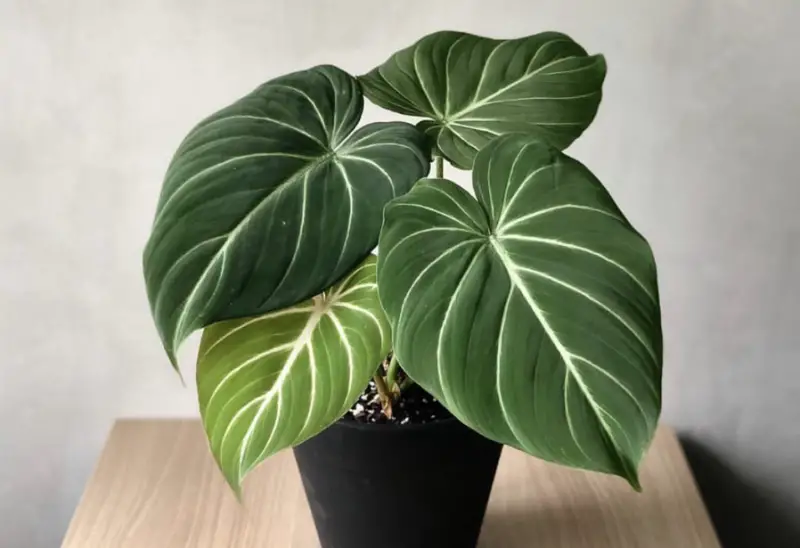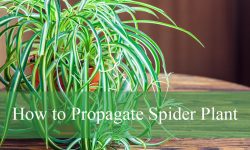Philodendron gloriosum is a stunning and unique plant known for its large, heart-shaped, velvety leaves that can grow up to 18 inches in length. This slow-growing, creeping plant adds a touch of tropical beauty to any indoor space, making it a favorite among plant enthusiasts. However, its care requirements are specific, and getting them right is crucial for its health and beauty.
In this comprehensive guide, we’ll explore everything you need to know about Philodendron gloriosum care, from light and watering to propagation and common problems. Let’s dive into the details!
Overview of Philodendron Gloriosum
Botanical Name: Philodendron gloriosum
Common Names: Creeping velvet philodendron, glorious philodendron
Family: Araceae
Plant Type: Perennial
Mature Size: Up to 2.5 feet tall
Sun Exposure: Partial, bright indirect light
Soil Type: Well-draining, aroid potting mix
Soil pH: Acidic to neutral
Bloom Time: Rarely blooms indoors
Hardiness Zones: 10-11 (USDA)
Native Area: South America
Toxicity: Toxic to pets and humans
Key Care Requirements for Philodendron Gloriosum

Philodendron gloriosum can be a bit challenging to care for, especially for beginners. However, with the right conditions, it can thrive and reward you with its stunning foliage. Here’s a breakdown of the essential care aspects:
Light
To ensure healthy growth and maintain the vibrant, velvety appearance of Philodendron gloriosum, providing bright, indirect light is essential. In its natural habitat, the plant thrives under the filtered sunlight of tropical rainforests. Mimicking this environment indoors helps support robust leaf development.
The best location is near a west- or east-facing window, where the plant receives gentle morning sun and filtered light during the day. Avoid direct sunlight, as it can scorch the leaves, causing brown spots and discoloration. Too much direct sun can stress the plant, making it more prone to pests and diseases.
While Philodendron gloriosum can tolerate lower light, it won’t thrive in dim conditions. Low light leads to leggy growth and smaller, less vibrant leaves. If natural light is limited, use LED grow lights for 12 to 14 hours of indirect light daily to promote optimal growth without overheating.
Soil
For Philodendron gloriosum to thrive, the soil mix plays a crucial role in mimicking its natural tropical environment, where it grows in loose, aerated substrates. The ideal soil for this plant should be well-draining, light, and airy to ensure that water flows through easily, preventing the roots from sitting in moisture. Water retention can lead to root rot, a common and often fatal issue for gloriosum, which is particularly sensitive to overwatering.
To create the perfect soil mix, you can either purchase a pre-made aroid mix, which is specifically designed for plants like philodendrons, or you can make your own at home using the following ingredients:
- 1 part standard potting soil: This provides the base and essential nutrients for the plant’s growth. A good quality potting soil is rich but lightweight, helping maintain the right balance of moisture and aeration.
- 1 part orchid bark: Orchid bark is crucial for aeration, adding larger particles that promote airflow around the roots. This is especially important for aroids like Philodendron gloriosum, which prefer oxygenated soil and tend to develop stronger root systems in airy environments.
- 1 part perlite: Perlite, a lightweight volcanic material, helps improve drainage by ensuring excess water doesn’t linger in the soil. It also helps the mix remain loose and well-ventilated, preventing compacting, which can suffocate roots.
You can also enhance this mix by adding a small amount of activated charcoal or sphagnum moss to improve moisture retention while maintaining aeration and preventing fungal growth.
Watering
Watering Philodendron gloriosum properly is crucial to avoid root rot, a common issue caused by overwatering. This plant is highly sensitive to excess moisture, so it’s important to allow the top 2-3 inches of soil to dry out between waterings. This ensures the roots get enough oxygen, preventing decay.
Check the soil by inserting your finger or using a moisture meter for more accuracy. When watering, thoroughly soak the soil until water drains out of the pot, but don’t let the plant sit in excess water.
Philodendron gloriosum prefers slightly moist conditions, but it’s safer to do underwater rather than overwater. Adjust your watering schedule with the seasons: water more in spring and summer, and less during the plant’s dormant phase in fall and winter.
Temperature and Humidity
As a tropical plant, Philodendron gloriosum thrives in warm and humid environments. Aim to keep the temperature between 65°F and 80°F. Avoid placing the plant in areas where temperatures can drop below 55°F, as this can damage the plant.
In terms of humidity, gloriosum prefers levels above 50%, with higher being better. Bathrooms can be great places for this plant, or you can boost humidity by:
- Using a humidifier
- Placing the plant on a tray filled with pebbles and water
- Misting the plant occasionally (but not excessively)
Fertilizer
Philodendron gloriosum is a relatively light feeder, but fertilizing it during the growing season (spring and summer) can promote healthier and larger leaves. Use a balanced liquid fertilizer diluted to half strength, and apply once every 4 to 6 weeks. Be cautious with over-fertilizing, as this can cause root burn and yellowing leaves.
Pruning
Pruning Philodendron gloriosum is simple. It doesn’t require regular pruning, but you should remove any yellowing, dying, or damaged leaves. This will help the plant conserve energy for healthier new growth. Use sharp, clean pruning shears to avoid introducing diseases or pests.
Propagation
Propagating Philodendron gloriosum is best done through rhizome cuttings. Here’s how to propagate this creeping plant:
- Identify a healthy section of the rhizome with at least two leaves.
- Use sharp, sterilized shears to cut the rhizome.
- Let the cutting dry for a few hours to form a callus over the wound.
- Place the cutting in moist sphagnum moss, and cover it with a plastic bag to retain humidity.
- Keep the cutting in indirect light, checking regularly to ensure it doesn’t dry out.
- Once roots have formed (typically within 2 to 4 weeks), transplant it into a well-draining potting mix.
Potting and Repotting
Philodendron gloriosum grows horizontally, meaning it prefers wide, shallow pots rather than deep ones. When repotting (usually every 2 to 3 years), choose a pot that accommodates its crawling growth. Ensure that the new pot has good drainage holes to prevent water retention.
Signs that it’s time to repot include slowed growth, smaller leaves, and the plant’s rhizomes crawling out of the pot.
Common Problems and Solutions
Philodendron gloriosum is a relatively low-maintenance plant if its basic needs are met, but there are some common issues you might encounter.
Yellowing Leaves
Yellowing leaves can be a result of several factors, including:
- Overwatering: The most common cause. Ensure the soil dries out between waterings.
- Underwatering: Check if the plant has gone too long without water.
- Old foliage: It’s natural for older leaves to yellow and die off.
Drooping Leaves
Drooping leaves can indicate overwatering, leading to root rot, or underwatering, causing the plant to dehydrate. Assess the moisture level in the soil and adjust your watering routine accordingly.
Browning Tips
Browning leaf tips are typically caused by low humidity or excessive direct sunlight. To prevent this, increase humidity levels around the plant or relocate it to a spot with less direct sunlight.
Pests and Diseases
Philodendron gloriosum can occasionally fall prey to common houseplant pests like:
- Aphids
- Spider mites
- Mealybugs
To prevent infestations, regularly inspect the plant’s leaves, and use neem oil or insecticidal soap if you notice any pests. Overwatering can also lead to fungal infections and root rot, so it’s crucial to keep the soil well-drained.
Toxicity Warning
Keep in mind that Philodendron gloriosum is toxic to both humans and pets. The plant contains calcium oxalate crystals, which can cause mouth and throat irritation if ingested. If you have curious pets or small children, it’s best to place this plant out of their reach.
Conclusion
Philodendron gloriosum is a captivating plant that brings an elegant touch to indoor spaces. Its stunning velvety leaves and creeping growth have made it a favorite among plant enthusiasts. By following the care tips in this guide, you can help your gloriosum stay healthy and vibrant over time.
Providing the right balance of light, proper watering, maintaining humidity, and occasional fertilizing are all essential to its growth. With some care and attention, your Philodendron gloriosum will flourish and become a striking feature in your indoor collection!






